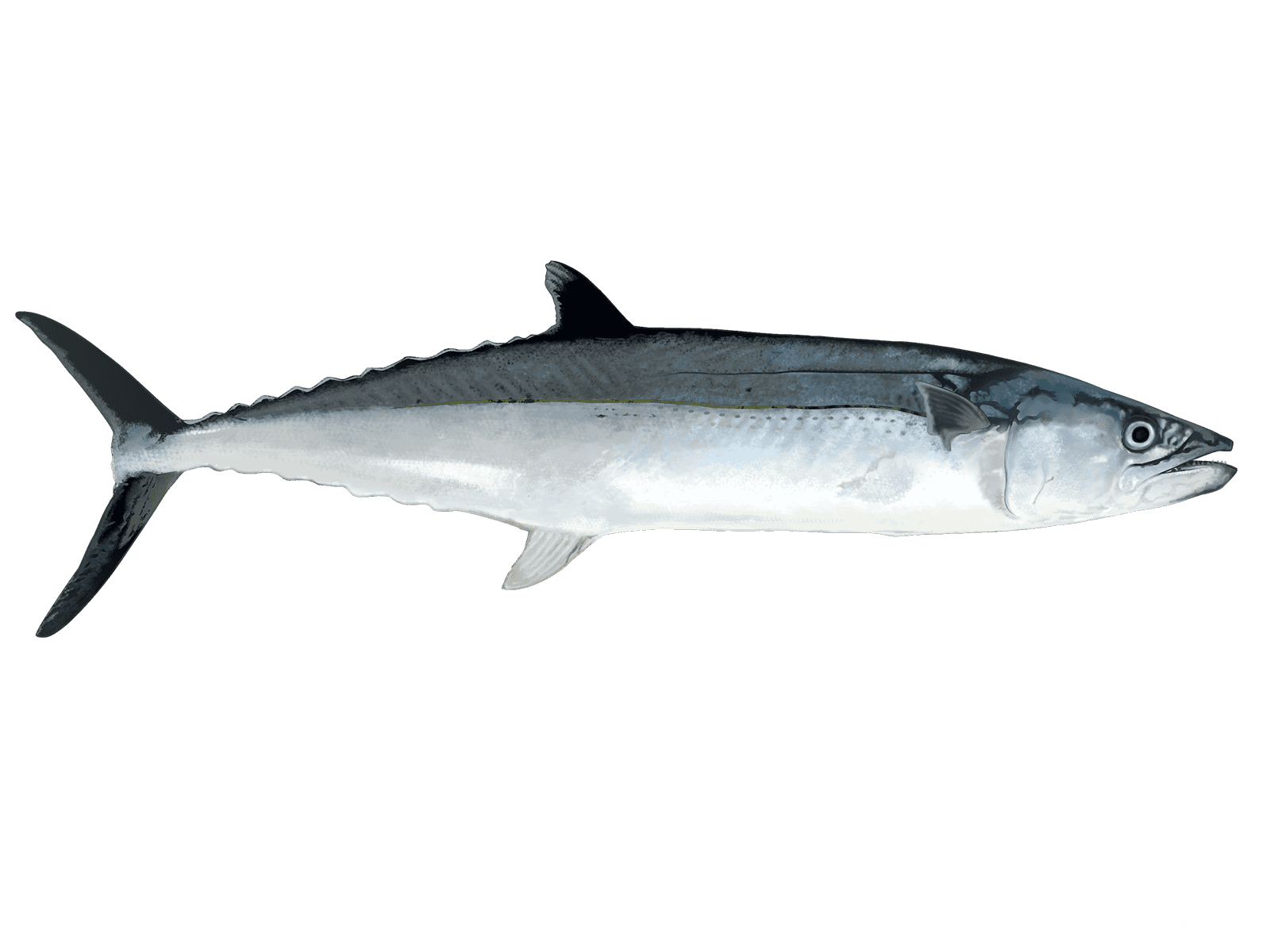Cero Mackerel

Species Details
Scomberomorus Regalis
Scombridae
Perciformes
Nearshore, Offshore
10 - 17 lbs.
24" - 72"
About the Cero Mackerel (Scomberomorus regalis)
The Cero Mackerel is a saltwater fish and can be found in abundance in the western Atlantic, typically near Florida and the Caribbean. They have several similar characteristics to the more popular Spanish Mackerel. What makes the Cero distinct is they have both the yellow-orange dots and the unique bronze streak along their body, scales that reach the pectoral fin, and their anterior dorsal fin is bluish-black.
Quite common along inshore patch reefs, the Cero Mackerel prefers warm coastal surface waters. They have finlets (small non-retractable fins) between the second dorsal and anal fins and are generally silver-white, but can appear as green-blue when looked at from above.
This torpedo-shaped species is muscular and has razor-sharp teeth, making it equipped to hunt smaller fish in the warmer coastal surface waters of the Western Atlantic. It is known as good game fish because of its speed, agility, and mediocre stamina.
Their diet usually consists of clupeoid fish such as herrings and small schooling fish such as sardines and anchovies. They also feed on silversides, squid, and shrimp.
Interesting facts about the Cero Mackerel
- Often referred to as the best of the mackerels, for their sport rating and food quality
- The cero mackerel has been reported to host 21 documented parasites
- It is a sushi-grade fish, often used in sashimi and ceviche.
Size & Speed
The common market size of Cero Mackerel is often five to ten pounds, with eight pounds being the average size. When they reach maturity, they are approximately 12-15 inches in length. However, The all-tackle world-record scaled in at 17 pounds, 2 ounces.
Often categorized as one of the thinner small fish, their streamlined bodies make them highly adept to move at swift speeds, and they have been reported to reach a maximum of up to 30mph.
Habitat & Distribution
Cero mackerel are typically found in tropical and subtropical waters in the western Atlantic. Their range extends from Massachusetts to Brazil, but they are most common around the Florida Keys, the Bahamas, and the West Indies.
They are both nearshore and offshore fish, favoring clear coastal waters over coral reefs and shipwrecks. They are not schooling fish, and typically travel solitary or in very small groups. They are usually near the water’s surface or mid-surface deep at depths of about 3-66 feet.
They spawn offshore in deeper waters in the midsummer but do not migrate or stray away from their natural habitat. This is April until October near Jamaica, but year-round near Florida, Puerto Rico, and Venezuela. The females release between 160,000 to 2.23 million eggs each, with eggs that are highly buoyant.
Cero Mackerel - Fishing Techniques
Cero mackerel are generally slender in relation to their weight, and while they can be fast, they lack stamina. Anglers should not have a difficult time and just have to be wary of these fish biting through the line with their sharp teeth.
Cero Mackerels can be caught year-round and do not need a complicated tackle. Generally, a 20lb braid line and a spinning reel would serve anglers well. However, these fish have great eyesight as well and can spot a thicker line, so generally, a balance between the visibility of the line and its strength against the mackerel’s teeth is key.
Chumming with ballyhoo, pilchard or any baitfish over patch reefs will lure the cero mackerel easily, and once they are primed up, they will take almost any bait or lure. Topwater lures are the most adventurous way to catch them, as they often feed off the surface and will jump at the lures.







